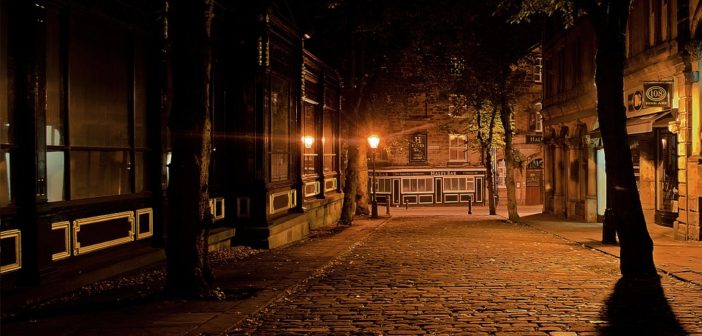Seasonal affective disorder, or SAD, is something that affects about one in 15 people here in the UK.
The disorder typically settles in around September each year and tends to hang around until April, or in other words, a half a year. It tends to be at its most severe during the months of December through February when the days are the coldest, wettest, and you don’t get as many hours of sunlight per day. Here in the UK, autumn and winter can be especially bleak, and bring even the most chipper of people down.
Seasonal affective disorder is, in fact, a branch of depression. It can present a vast array of symptoms. It can happen to both men and women, and age doesn’t matter. Here we’ll take a closer look at what exactly SAD is, its symptoms, who is at risk of suffering from it and, of course, the ways in which you can prevent and combat it.
What is SAD?
As discussed, SAD is a form of depression that affects a large number of people, not just in the UK but in northern and southern hemispheres. The only area of the world where it is rare is within 30 degrees of the equator. This can be attributed to the fact the daylight hours are much longer, it is brighter, and there isn’t that autumn/winter darkness.
SAD can be relatively minor and only present a few small symptoms, or it can be extremely severe. For those with a severe form of SAD, it can be impossible to function and go about daily activities without some sort of regular treatment.
While SAD tends to be thought of as an autumn and winter issue, there are those who can suffer from it in the spring and summer, but this is rare.
Who Is At Risk?
While SAD can affect anyone, there is research that shows it may run in the family and have to do with genetics. With that said, there are some groups that are considered at a higher risk. These include adults under the age of 50 years old, women, and those who live in countries in the north. Children, teens, and adults over the age of 50 years old don’t tend to suffer from it as often, but that’s not to say it can’t happen.
What Are the Symptoms?
SAD has all kinds of different symptoms and they can vary in severity. You may only have one or two of these symptoms, or you may suffer from the full list. Some of the most common symptoms include:
- The inability to concentrate and focus
- Issues falling asleep, staying asleep, or waking up
- Decreased libido
- A noticeable lack of energy despite how much sleep you may be getting
- Undereating or overeating
- A lowered immune system which results in catching more bugs
- Loss of interest in activities and hobbies that you usually enjoy
- Anxiety and stress
- Withdrawing from friends and family and social situations at large
- Changes and dips in your mood
- Depression
Remember, these are just the most common symptoms, as many other symptoms can also exist.
How Can a Person Be Diagnosed?
So, what happens if you think you may have SAD and how can you be diagnosed? The best thing to do is schedule an appointment with your doctor, discuss your concerns, and go from there. The worst thing you can do is ignore your feelings and symptoms and just hope the situation will remedy itself.
Not only will your doctor be able to diagnose you, but she/he will also be able to put together an individualised treatment plan that fits your specific needs. They will also be aware of your own medical history, which is essential when prescribing a treatment.
How to Treat SAD?
Treating SAD isn’t just a quick and simple solution. Sometimes it can require many changes involving medication and changes to your lifestyle. There tends to be a trial period too as you work to find out which treatment is the most effective for you. The goal is to make the person feel happier, healthier, and more comfortable in their everyday life so that they can enjoy each day.
Your doctor may find it best to prescribe antidepressants depending on the severity of your case. This is typically the last resort though.
What About Lifestyle Choices?
When it comes to treating SAD, some of the best and more effective solutions are lifestyle choices. This means going about your daily life differently, and making a variety of small changes. The idea is that all these small changes add up and create a tremendous impact and will help you to deal with the autumn and winter months much better.
Here’s a look at some of the most common lifestyle changes that you can make.
Make Use of Artificial Sunlight
A big part of the problem for those who suffer from SAD is the lack of sunshine during the autumn and winter months. While you can’t exactly change that, you can invest in a light therapy box that is meant to mimic sunlight. The idea is that you can sit in front of these boxes for just 30 minutes a day and they are able to stimulate a response from your body.
As for when to use these light boxes, doctors tend to recommend you use it in the morning so you can feel awake, refreshed, and ready to tackle the day with a positive attitude. These boxes are quite compact, so you can easily plug them into any room in your house.
Make Decor Changes in the Home
Take a look at your home or apartment and ask yourself where you can make changes in the space that will help promote a healthy and happy mindset. Windows should be a focal point, as you want to let as much light in as possible. This may require you to change out those heavy dark drapes for sheers, or blinds that allow the light to pour in.
A great place to shop for new window coverings is fashioninteriors.co.uk, which offers made to measure curtains and roman blinds. You can pick something light coloured, and lightweight that will allow some privacy but still allow the light to shine through. Choosing a light, bright colour can also make the room feel more cheerful and bright in general.
Fashion Interiors also offers all the poles, tracks, and accessories you’ll need if you are installing curtains from scratch.
Place Furniture Near Windows
Another trick is to move the furniture around in your home so that you are able to sit close to a window. You can place furniture right in front of a window or next to it, giving you a place to relax that offers maximum sunlight potential.
Pick Up Indoor Plants
Autumn and winter tend to be pretty bleak as far as nature goes, but there is no reason your house has to be the same. Why not pick up a variety of indoor plants in various sizes, shapes, and colours. You will get that sense of the outdoors even when you’re trapped inside on a yucky weather day.
On a positive side note, houseplants also help to purify the air in the home, which will help you to concentrate, focus and feel calmer.
Engage in Regular Exercise
Regular exercise is something that everyone can benefit from, and those with SAD are no different. Exercise helps to energise you, keep you healthy, and release those feel-good hormones that you are probably in short supply of. It can also help you to sleep better at night.
Be Mindful of What You Eat and Drink
Believe it or not, what you eat and drink can also impact SAD. Making sure to eat a healthy well-balanced diet with all the essential calories, nutrients, vitamins, and minerals will fuel your body and help you to combat the symptoms of SAD.
Force Yourself to Stay Social
Your instinct may be that you want to pull away from friends and loved ones and basically burrow in your bed in a dark room until spring. It’s important to fight that feeling and force yourself to stay social and stay connected to your loved ones. Be honest with them, let them know you are going through a hard time, and let them know you’re going to be trying your best to stay connected and you may need their help doing so.
Look Into Aromatherapy
Another treatment option can be to use aromatherapy. Many people find essential oils can have an impact on their mood, brain, their sleep habits, their appetite, and internal clock. Essential oils can be used in a rollerball to place on various pulse points of your body (mix the oil with a carrier oil to dilute it), a couple drops can be added to a bath, or you can use a diffuser.
There is No Reason to Continue Suffering
While it can be hard to see the light and believe things will get better when you are suffering from SAD, the fact is that there are all kinds of treatments out there that can have a real impact on you.




